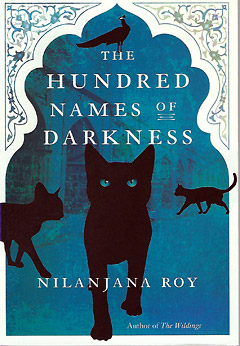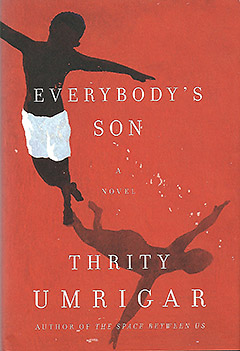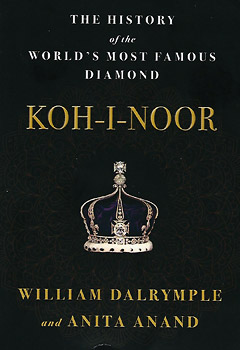
Books

 “The Hundred Names of Darkness” (410 pages; $18.95) by Nilanjana Roy; published by Random House Canada (www.penguinrandomhouse.ca)
“The Hundred Names of Darkness” (410 pages; $18.95) by Nilanjana Roy; published by Random House Canada (www.penguinrandomhouse.ca)
Like its prequel “The Wildings,” this finale ode to cats by the immensely talented author, is a masterpiece. We catch up once again with Nizamuddin family of cats – sender Mara, kitten Southpaw, ferocious Katar, fighter tom Hugo and the pretty queen Beraal. As the memorable cats look to recover after a tragic battle with the feral cats, they make new friends such as Doginder, a friendly stray; cheel Hatch; tiger Ozzy; mouse Jethro Tail; and the renowned Senders of Delhi. Of course, an even bigger threat now comes not from other cats but a wide range of predators like Bigfeet (humans), spiteful dogs, snakes and bandicoots. As the author articulates, “Rising up like a black, oily fog, overpowering the light lure of the golden magnolia flowers and the sweet smell of the grasses, stronger than the markings of the bats who had made the pepperpot ruin their summer home, there was the unmistakable stench of bandicoots.” Roy describes the scents of the colony while the cats lingered, “It brings to them the smell from the construction sites: the spoiled-earth scent of the concrete mixers, the sullen metal stink from the welder’s torches, and above all, the black, tarry stench that spoke of the Bigfeet’s dislike for the rest of the animals.” Mara, the sender, hopes that she can communicate with Bigfeet so they can hear her out. And then gives up, “It was because they were so busy dealing with the incessant chatter of their own minds that nothing else could get through.” Quite a statement on us humans, that one. A superbly written novel, “The Hundred Names of Darkness” is the perfect sequel to “The Wildings.” Though the inspiring tale of the Nizamuddin cats ends with this finale, here’s hoping that author Roy will pen more feline anecdotes or otherwise in future.
 “Everybody’s Son” (344 pages; $26.99) by Thrity Umrigar; published by HarperCollins (www.harpercollins.com)
“Everybody’s Son” (344 pages; $26.99) by Thrity Umrigar; published by HarperCollins (www.harpercollins.com)
We have read and reviewed Thrity Umrigar’s last two Indian-character-centered books, “The Space Between Us” and “Bombay Time.” So, when we heard the Bombay native had written a novel on a totally different theme, we were more than keen to read “Everybody’s Son.” And it proved to be a drastic but refreshing change as the author addresses sensitive issues of race, class and privilege through the 9-year-old Anton from the projects. After his crack-addicted mother Juanita disappears, the neglected black boy is adopted by a wealthy, ambitious white judge and politician, David Coleman, and his wife Delores, who are grief-stricken from the death of their biological son. The adopted Anton settles into a new life amid mixed emotions. He graduates from Harvard College and Law School, then becomes attorney general before running for governor. But lingering feelings about his identity and past trouble Anton and are fiercely reinforced when his college girlfriend rebukes him, “I can’t decide if you’re the blackest white man I’ve ever met or the whitest black man.” Torn between two worlds, one day Anton decides to reconcile and ends up at the doorsteps of his long-lost mother’s home. “Come with me, Mam, he would say. Now that I’ve found you, it would be unbearable for me to leave you again. It would destroy me not to have you in my life … He listens to the footsteps of the approaching dark, and he sees now how the orchestra plays in the natural world, how effortless the coordination is wind is with sky and sun and dusky fields. This is what he wants for himself, all the elements of his life coming together. And if he has this wish granted occasionally, here and there and now and then, he will still be the luckiest of men.” There is deception, lust for power, poverty, ambition, grief, forgiveness, broken trust and more in “Everybody’s Son” by Umrigar about the struggles of a black and a white family to share one much-loved son. Hats off to the author for bringing this tenacious tale alive.
 “KOH-I-NOOR – The History of the World’s Most Famous Diamond” (330 pages; $26) by William Dalrymple and Anita Anand; published by Bloomsbury (www.bloomsbury.com)
“KOH-I-NOOR – The History of the World’s Most Famous Diamond” (330 pages; $26) by William Dalrymple and Anita Anand; published by Bloomsbury (www.bloomsbury.com)
In our opinion, it is inarguably and simultaneously the most well-known and ill-reputed diamond in the world. The biggest tragedy is nobody knows about the origins of Koh-i-Noor or Mountain of Light though the authors attempt to shine some light. In the first half of the book, Dalrymple contends that during the Mughal empire, Nader Shah seized the diamond, which made its way to Iran before spilling blood in Afghanistan and then on to the Sikh empire in the Punjab. In the second half, Anand describes in great detail the aftermath of the death of Ranjit Singh and the crumbling of the Sikh kingdom in 1849. It didn’t take long for the British to force the 10-year-old Duleep Singh, heir to the crown, to sign off the diamond to the Queen of England. For 170 years, the Koh-I-Noor has been in British hands and there have been demands from not just India, Pakistan and the Taliban in Afghanistan for its return. Lest we forget, the Golden Temple in Amritsar, “because, as one called to a phone-in put in, ‘the diamond belonged to a Sikh maharaja, and India did not even exist as a sovereign nation in those days.’ ” The last time the supposedly cursed diamond was seen in public was in 2002 on the coffin of Britain’s queen mother. Surrounded by a tale of greed, violence, murder, blindings, torture, colonialism and conquest for over three centuries, it now sits in the Tower of London. The authors, while seeking to provide the first accurate history of the jewel, raise a vital question on imperial looting. “Do we simply shrug it off as part of the rough-and-rumble of history or should we attempt to right the wrongs of the past?” they ponder. Meanwhile, the Mountain of Light awaits return to its “rightful owner.” And as we are all aware by now, even that is up for grabs.
 “The Ministry of Utmost Happiness” (458 pages, $28.95) by Arundhati Roy; published by Alfred A. Knopf (www.aaknopf.com)
“The Ministry of Utmost Happiness” (458 pages, $28.95) by Arundhati Roy; published by Alfred A. Knopf (www.aaknopf.com)
Twenty years is a long time, especially for a novelist to produce another book. That’s how long Roy fans have had to wait and we can definitely convey to her avid followers that the delay should be worth it. Be forewarned that like Salman Rushdie novels, this one too requires attention and concentration, what with a complex storyline and intertwined characters that cross all boundaries of ethnicity, religion and gender. The Booker Prize winner transports us to a Delhi graveyard where Anjum, previously Aftab, lives. Roy describes Anjum, who was born with both male and female genitals, so eloquently, “She had her nose pierced and wore an elaborate, stone-studded non-pin, outlined her eyes with kohl and blue eye shadow and gave herself a luscious, bow-shaped Madhubala mouth of glossy-red lipstick.” But this fascinating storyline doesn’t last for long before getting muddled in with a Kerala Christian called Tilottama and her lovers: journalist Naga, intelligence officer Biplab and a Kashmiri militant Musa. There also are the two Miss Jebeens: one found on a sidewalk in New Delhi and the other buried in Srinagar. It could have been fine and groovy except for the fact that Roy cannot resist bringing social causes and political activism to the forefront. And needlessly so, at most times, in our humble opinion. So, we have mention of the 1976 Emergency by Indira Gandhi; 2002 Gujarat riots; Babri Masjid demolition; World Trade Centre attacks; partition of India; Kashmir violence, etc. Regardless, here are some beautifully written gems: “Normality in our part of the world is a bit like a boiled egg: its humdrum surface conceals at its heart a yolk of egregious violence.” “Sleep came to them, quick and easy, like money to millionaires.” “Trees raised their naked mottled branches to the sky like mourners stilled in attitudes of grief.” “In Kashmir the only thing to do with nightmares was to embrace them like old friends and manage them like old enemies.”
COOKBOOK REVIEW
 “Easy Indian Cooking: 101 Fresh & Feisty Indian Recipes” by Hari Nayak; photographs by Jack Turkel; 124 pages; $14.95; published by Tuttle Publishing. (www.tuttlepublishing.com)
“Easy Indian Cooking: 101 Fresh & Feisty Indian Recipes” by Hari Nayak; photographs by Jack Turkel; 124 pages; $14.95; published by Tuttle Publishing. (www.tuttlepublishing.com)
It turns out we have reviewed two cookbooks in the past by Hari Nayak: “My Indian Kitchen: Preparing Delicious Indian Meals Without Fear or Fuss” and “The Café Spice Cookbook.” And now the author, restaurateur and chef is back with yet another gem, “Easy Indian Cooking: 101 Fresh & Feisty Indian Recipes.” Like his previous books, Nayak shares some more of his easy-to-follow recipes to create appealing hale and hearty meals in no time at all.
Packed with eye-catching photos by Turkel, the book offers chapters such as “Accompaniments,” “Appetizers, Soups and Salads,” “Vegetables, Egg and Cheese,” “Seafood,” “Poultry,” “Breads and Rice” and “Desserts and Drinks.”
Vegetarians will crave to try out such recipes as Oven-Roasted Spiced Eggplant, Southern Indian Masala with Potatoes and Peas, Sweet and Sour Asparagus with Cashews and Spicy Bombay Chili Eggs with Broccolini. Meat/seafood lovers will be inspired to cook Lemon Pepper Chicken with Fresh Mint, Baked Marinated Chicken, Aromatic Lamb with Green Peas and Cumin, Goan Crab Cakes, Curried Malabar Squid and Tiger Prawn Curry with Lemongrass. You can wash it all down with Mango Yogurt Lassi with Saffron, Chocolate-Ginger Cakes with Dates, Watermelon Cranberry Sharbat, among other desserts and drinks.
Here are just two of the recipes reproduced with permission from the publisher:
 Konkan Chili Shrimps
Konkan Chili Shrimps
Serves 6 Preparation 10 minutes Cooking 10 minutes
An Indo-Chinese recipe, this preparation of prawns is very popular in the streets of some major metropolitan cities in India. I often make these for my Indian friends, which never fails to make them nostalgic for the things they miss back home. You can make this dish really quickly and serve it for a weekday dinner along with a portion of Rosemary Lemon Rice (recipe included in book).
- 1 tablespoon canola or corn oil
- 1 tablespoon peeled and chopped fresh ginger
- 3 cloves garlic, chopped
- 2 shallots, chopped
- 10 fresh curry leaves
- 36 fresh medium shrimps, peeled and deveined
- 1 tablespoon soy sauce
- 2 tablespoons fresh lemon juice
- 2 tablespoons chopped dried red chili peppers
- 2 tablespoons minced fresh coriander leaves (cilantro)
- ¼ cup (60 g) low-fat plain yogurt, whisked until smooth
- Salt, to taste
- 2 tablespoon chopped green onions (scallions), for garnish
- Heat the oil in a wok or very large sauté pan over very high heat until smoking hot. Add the ginger, garlic, shallots, and curry leaves and sauté for 1 minute.
- Add the shrimps and cook just until they start to turn pink, 2 to 3 minutes.
- Add the soy sauce, lemon juice, dried chili peppers, and fresh coriander and cook, stirring often, 2 minutes longer. Add the yogurt and cook until the shrimps are just cooked through. Season with salt and serve warm garnished with green onions.
 Mixed Rainbow Vegetables with Kadhai Paneer
Mixed Rainbow Vegetables with Kadhai Paneer
Serves 6 Preparation 20 minutes Cooking 15 minutes
In a traditional preparation of kadhai paneer, the masala and the spices are ground into a wet paste. However, in this recipe, I call for a stir-fried variety of the same spices that go into the making of the traditional kadhai paneer. Adding the various bell peppers makes the dish a visual treat. This is also one of those recipes that requires minimal prep time and yet becomes a delight on the table.
- 3 tablespoons oil
- 1 tablespoon peeled and minced fresh ginger
- 2 large cloves garlic, minced
- 2 small onions, diced
- 1 tablespoon ground coriander
- 1 teaspoon ground cumin
- ½ teaspoon ground fennel seeds
- ½ teaspoon ground cardamom seeds
- ½ teaspoon red pepper flakes
- Salt, to taste
- 4 small tomatoes, diced
- 2 small green bell peppers, deseeded and diced
- 2 small red bell peppers, deseeded and diced
- 2 small yellow bell peppers, deseeded and diced
- 6 oz (170 g) paneer cheese, diced
- 4 tablespoons chopped fresh coriander leaves (cilantro)
- 4 green onions (scallions), chopped
- Freshly-ground black pepper, to taste
- Heat the oil in a large non-stick wok or skillet over medium-high heat, and then add the ginger and garlic and briefly cook, stirring, about 1 minute. Add the onions and cook, stirring until golden, 2 to 3 minutes.
- Reduce the heat to medium and add the coriander, cumin, fennel, cardamom, red pepper flakes and salt, and stir for about 2 minutes. Add the tomatoes and bell peppers, cover, and continue to cook, stirring constantly until the dish is saucy, about 5 minutes.
- Add the paneer, fresh coriander and green onions, and increase to medium-high heat. Cook uncovered for about 5 minutes. Serve hot, sprinkled with black pepper.